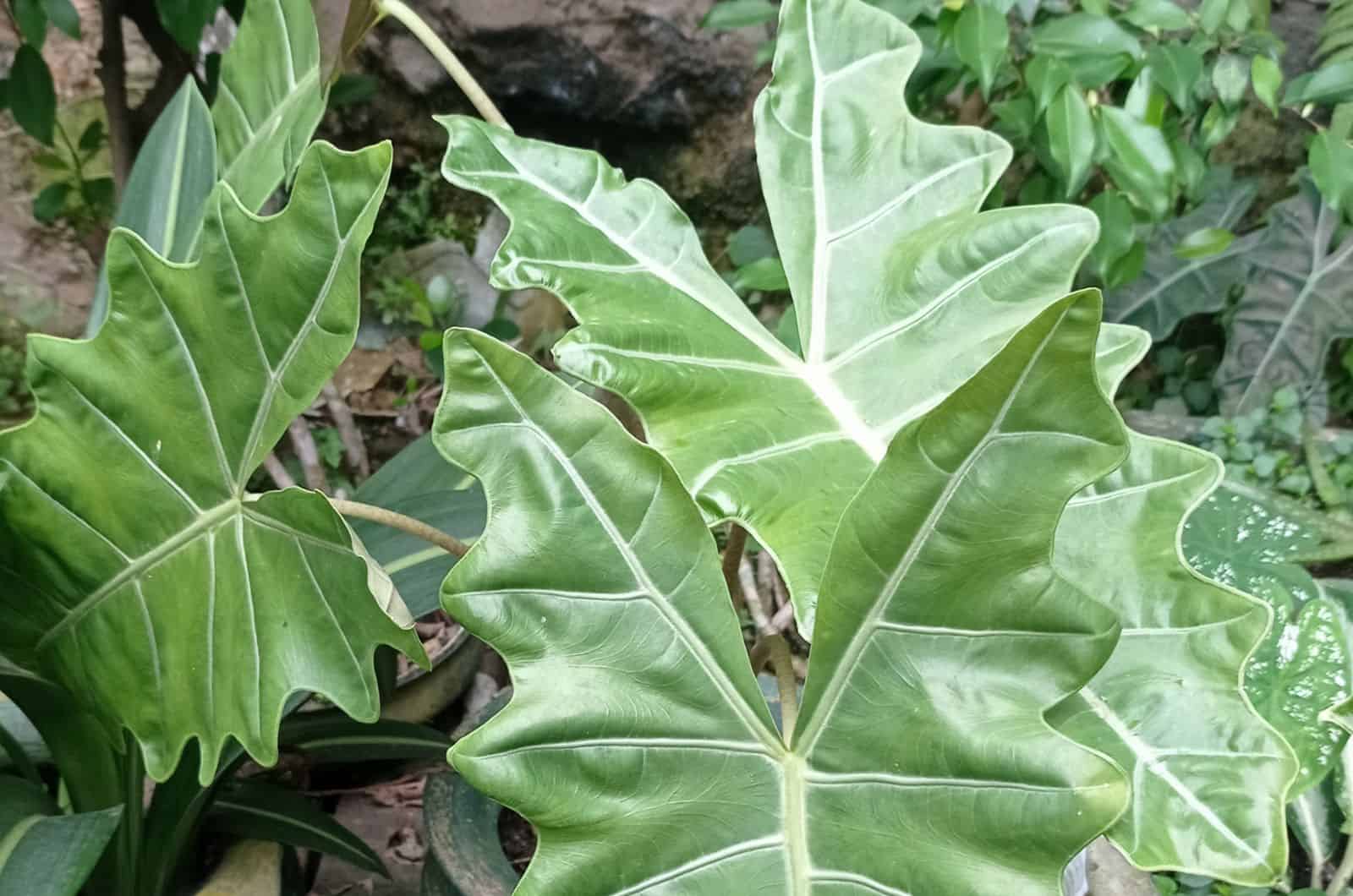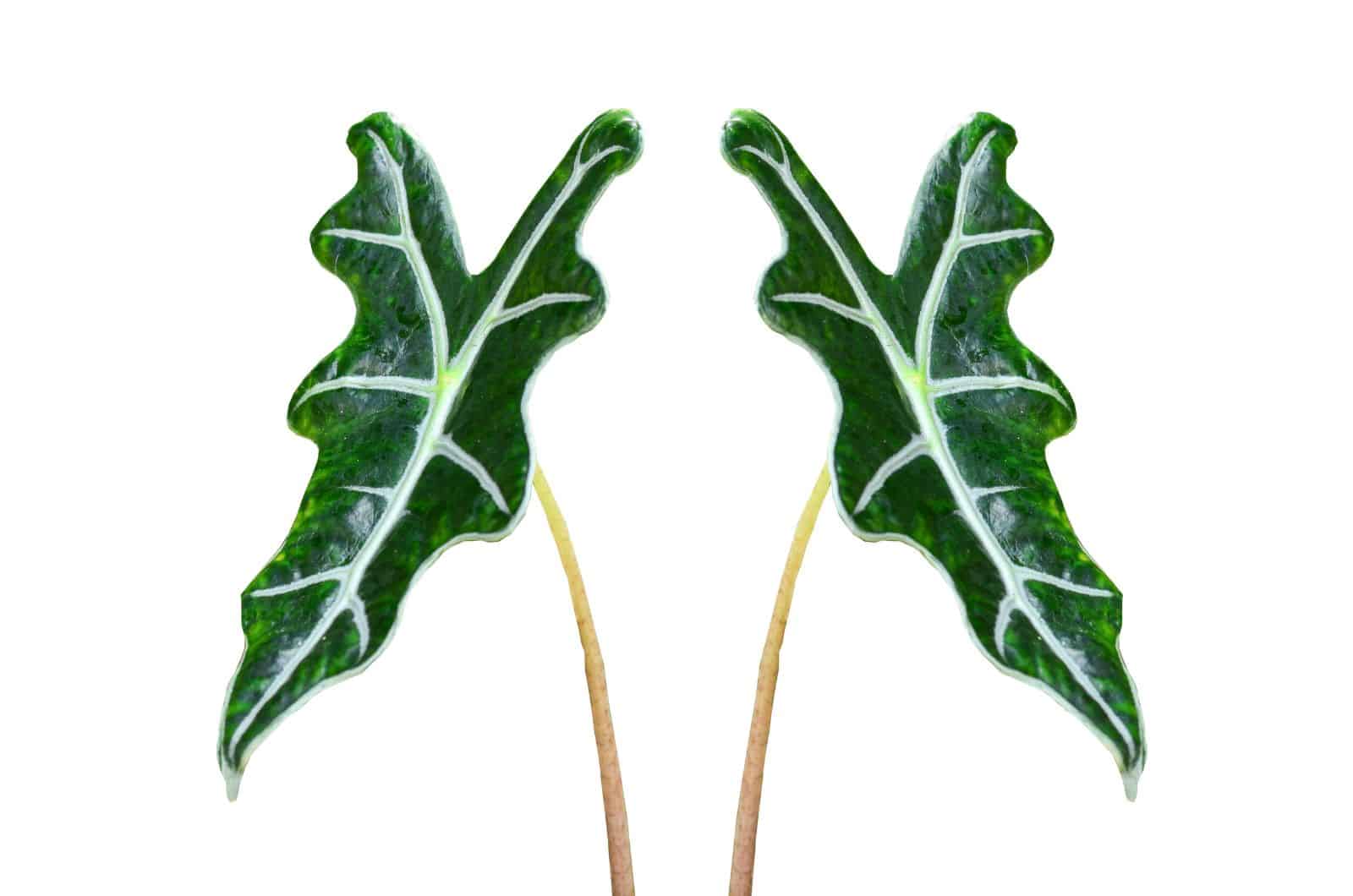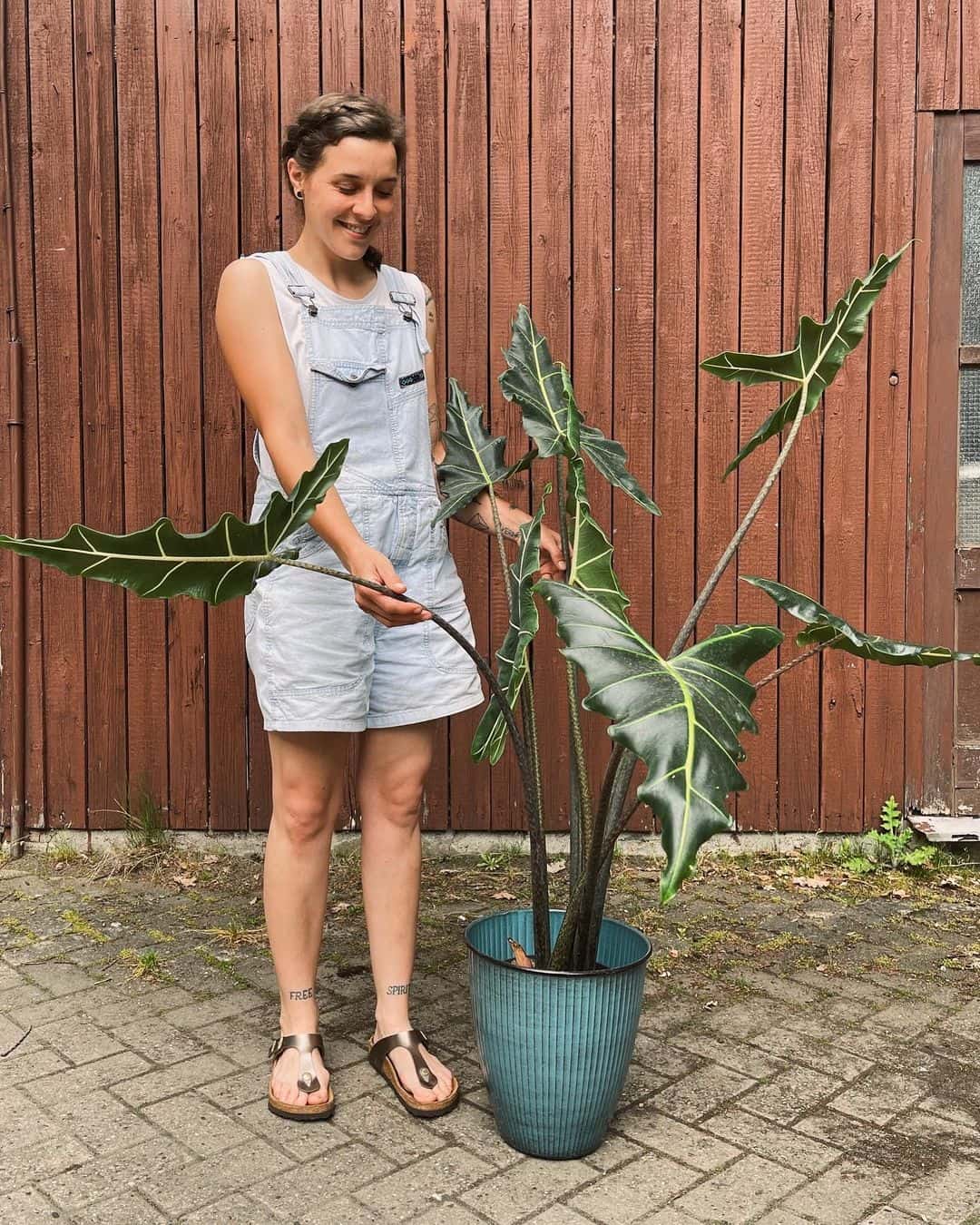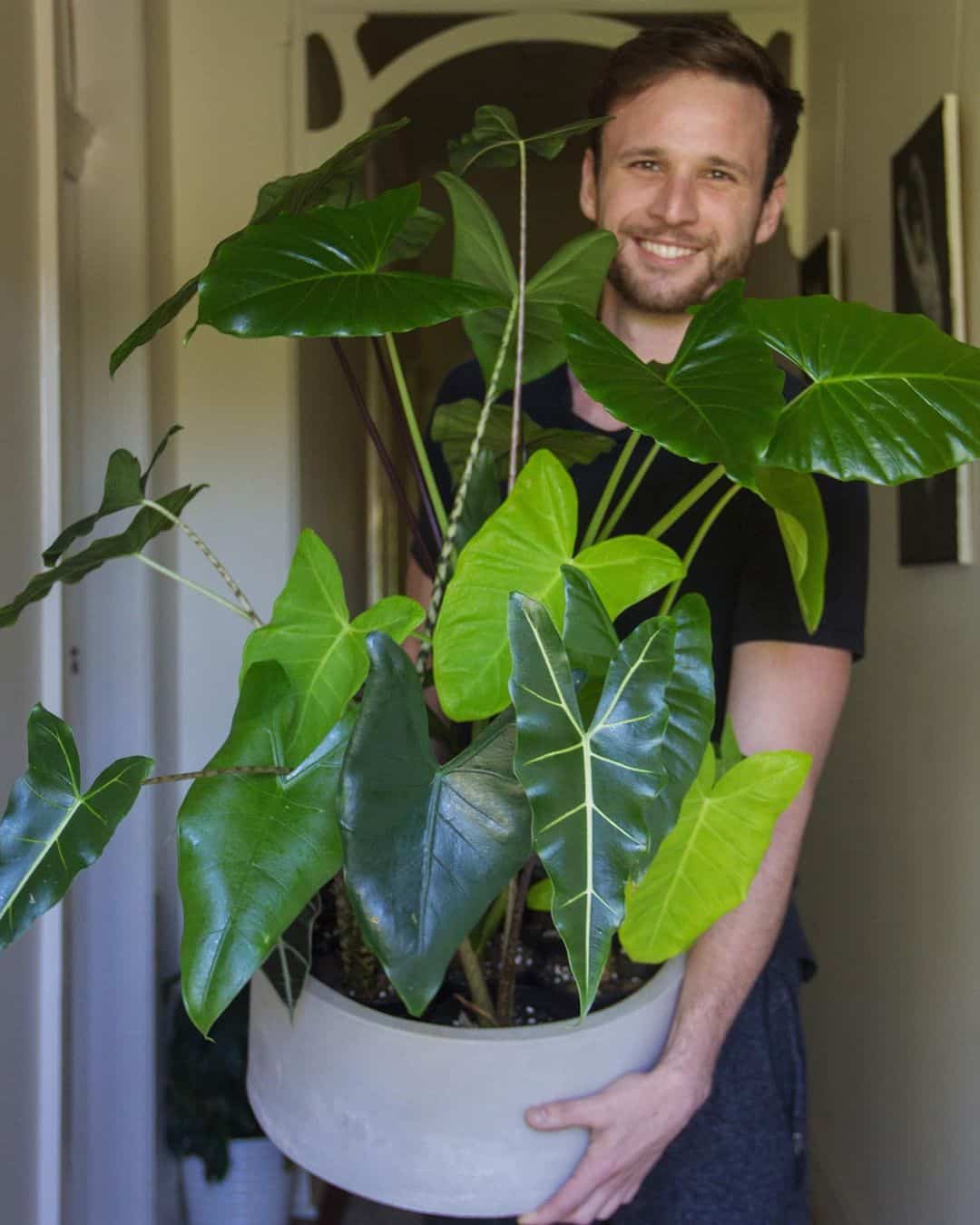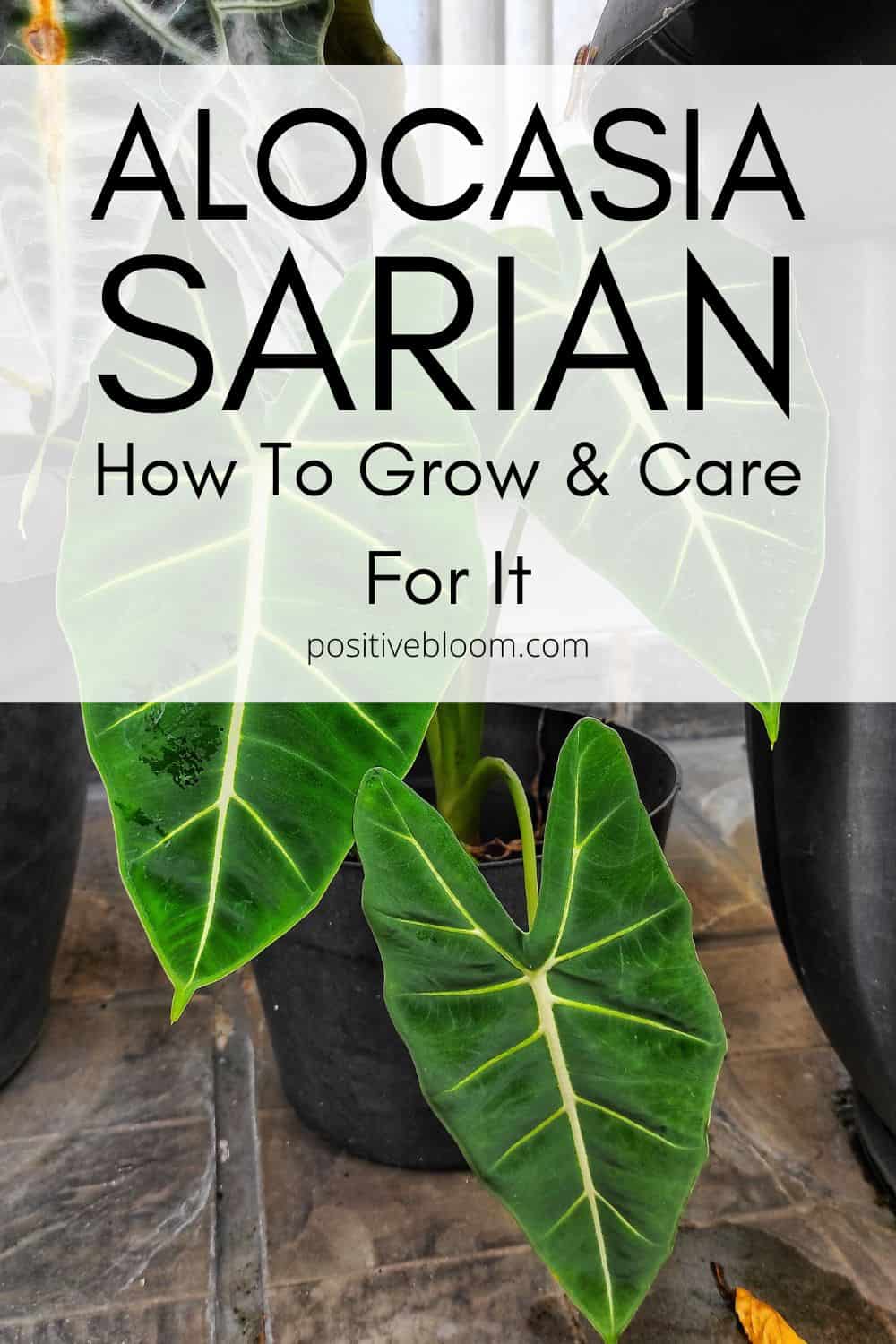If you ask any grower to recommend a breathtaking plant that’s also relatively easy to maintain, their answer will definitely be an Alocasia!
Of course, you’ll need to choose which Alocasia variety to grow, as this genus encompasses more than 90 options.
In this article, I’ll tell you more about the Alocasia sarian, a magnificent hybrid of Alocasia zebrina and micholitziana.
Let’s get started!
What Is The Alocasia Sarian?
Before we move on to the care requirements of this Alocasia plant, I want to tell you more about its botanical background, origin, and appearance.
I mentioned that this Alocasia is a hybrid, and its scientific name is Alocasia micholitziana × zebrina ‘Sarian’.
Plants from the Alocasia genus are commonly referred to as elephant ear plants. Still, you need to know that Alocasias differ from Colocasias, which bear the same nickname.
This pretty and rare plant initially grew in tropical and subtropical regions of Asia, and is an evergreen perennial that reaches approximately 6 feet tall in its natural habitat.
The name sarian doesn’t come from Latin; the name was given to honor Philippines agricultural journalist, Zac B. Sarian.
This elephant ear plant is toxic; if you have curious toddlers or pests, please keep the plant out of their reach.
Appearance
This plant features massive, pointy green leaves that resemble an elephant’s ears, hence the name. The shape of the leaves gives them a wider, more open appearance. These leaves have a tall, thick, silky stem that is triangulated and strongly ribbed.
The surface of the leaves is covered in beautiful white veins that make this plant stand out.
Regarding inflorescences, they have a spadix that resembles spikes, and the spathe looks like the leaves.
Alocasia Sarian Care Guide
Photo from: @tonidendron
The Alocasia sarian has pretty low care requirements when grown as a houseplant, making it an ideal plant for any household. Although it may seem like it needs a lot to grow well, once you get the gist it’s really easy to maintain.
The Alocasia sarian is a tropical perennial and thrives in bright indirect light, moderate temperatures, high humidity, and well-draining soil. You’ll need to keep the soil moist (not too wet) and feed your sarian regularly.
Let’s see more care tips for Elephant ear plants.
Light Requirements
The Alocasia sarian is a fast grower that needs a lot of bright indirect light to thrive and reach its full potential.
You can grow it as both an outdoor and indoor plant, but you’ll need to keep it away from direct sunlight no matter where it grows.
Find a shady spot in your home or garden, and rotate your elephant ear plant so that all of its parts get enough light.
Temperature & Humidity Requirements
This Alocasia plant prefers moderate temperatures, and any extreme may be detrimental. Cold temperatures may stunt growth, and high temperatures may cause wilting and drooping.
The ideal temperature range for the Alocasia sarian is between 59 to 89 degrees Fahrenheit. You can grow it outdoors year-round if you live in USDA hardiness zone 12.
This elephant ear plant enjoys high humidity levels, so if you want to keep it happy and healthy, you’ll need to increase humidity to over 60%.
I recommend using a humidifier in the room where you keep your Alocasia plant.
Soil Requirements
The Alocasia sarian is a rhizomatous plant, so it prefers porous and well-draining soil, and despises compact and heavy soils.
You can improve drainage by adding soil amendments such as perlite or bark and using a pot with drainage holes.
Watering And Fertilizing
To devise a perfect watering schedule for this plant, you need to ensure moist soil. What does this mean? This plant despises soggy soil, but also won’t tolerate drought.
Water your elephant ear plant when the top two inches of the soil dry out. Feed your Alocasia sarian regularly during the growing season using an all-purpose, slow-release fertilizer.
Potting & Repotting
If your Alocasia overgrows its pot or suffers from rhizome damage, you’ll need to repot it. Choose a pot that’s a little bit larger in diameter than the old one by approximately two inches.
Pay attention to care after repotting to avoid transplant shock.
Alocasia Sarian: Propagation
Photo from: @sydneyplantguy
You can get the offspring of this Alocasia by using a simple plant propagation method; rhizome (tuberous roots) division.
Start propagating in early summer, and avoid propagating during the dormancy period. Take your Alocasia out of its pot and expose the root system.
Separate the offsets using your hands or a sharp and clean cutting tool. Place each offset in a jar with water or a nursery pot filled with soil, and return the parent plant to its pot.
If you use water propagation, transfer the offset once you notice new growth.
Now all you need is to stick to the plant care guide with our care tips. Give your new plant some time to adjust to its new environment, and I’m sure it will be thriving soon.
Common Problems
The Alocasia sarian isn’t a problem-free plant; here is a list of the most common problems that affect it:
• Pests: You may have issues with nasty spider mites, so rub the leaves with neem oil and use pesticides in case of infestation.
• Root rot: The most common cause is overwatering; you’ll need to repot your Alocasia and remove the affected underground structures.
• Yellowing: Both overwatering and underwatering can cause yellow leaves; change your watering schedule and check light levels in this case.
• Crispy or wilting leaves: Low humidity will most likely cause the leaf edges and leaf tips to turn brown and become crispy. Increase humidity levels using a humidifier and mist your Alocasia sarian regularly.
Wrapping Up
The Alocasia sarian is a breathtaking plant that makes an excellent addition to any room or garden.
Pay attention to all its care requirements, propagate your elephant ear plant, and keep it out of reach.
Just follow our guide, and you won’t have any issues.
Until next time!
Like this post? Share or pin it for later!

